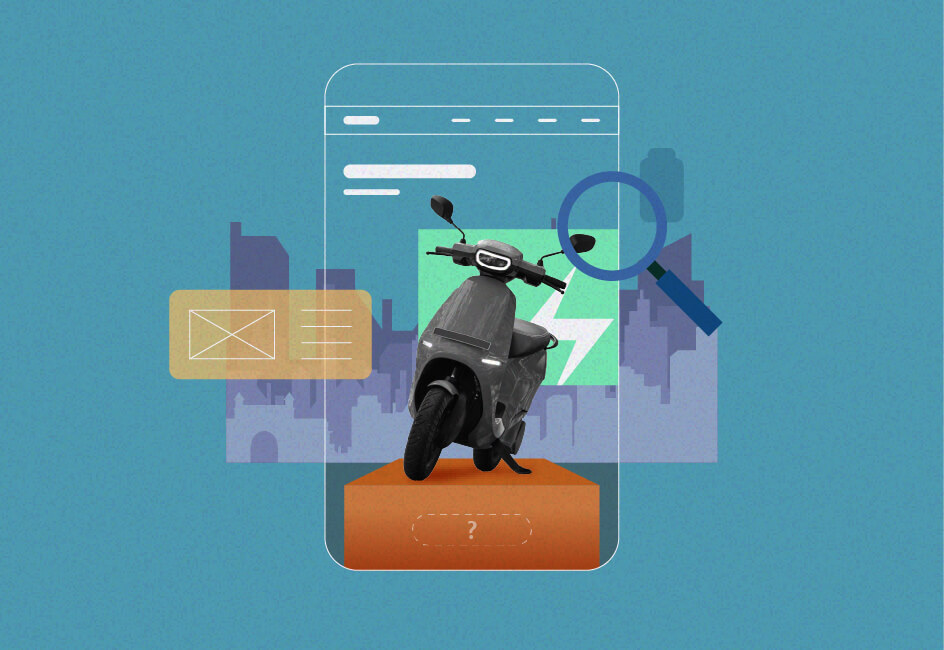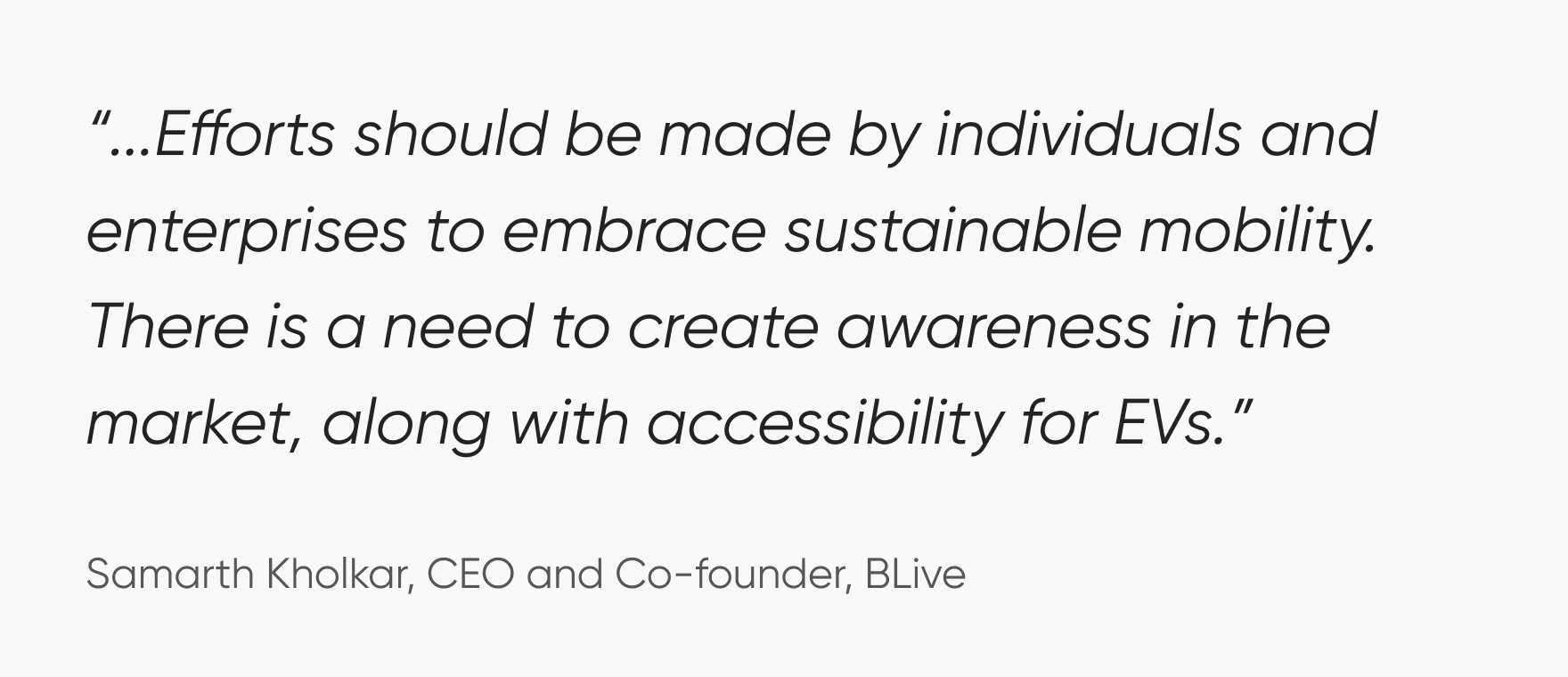Driving an optimal EV experience right from the first website interaction

Packed with industry-specific data and design recommendations
The landscape of sustainable mobility is rapidly evolving. Driven by urgent environmental concerns and the global imperative to reduce carbon footprints, electric vehicles (EVs) stand out as a pivotal innovation prepared to redefine transportation. This flourishing sector, particularly two-wheelers, represents a significant step towards a greener future. However, users still harbor significant reservations regarding the transition to electric mobility.
What: Rise of electric vehicles
As we move towards designing a sustainable future, we are bound to be more conscious of our actions and choose greener alternatives wherever possible. Electric vehicles have, thus, become the preferred choice for many users. In 2020, EVs contributed to only 1% vehicles on road in India, and the number is expected to grow to 30% by 2030. To achieve this growth, there has to be a substantial increase in the acceptance of EVs by Indian consumers.
EVs are cost-effective, eco-friendly alternatives to redefine the traditional transportation space. Two-wheeler EVs are optimal for everyday commuting and shorter travels within villages or towns for ease of driving and saving nearly 90% fuel cost on a monthly basis.
Despite all its advantages, certain pervasive challenges still remain. Prospective buyers and even current users hold several reservations regarding the transition to electric vehicles. These apprehensions, typically centered around factors such as range anxiety, charging infrastructure availability, battery longevity, and perceived performance limitations, together directly hinder widespread adoption of EVs.
It is absolutely paramount to address these fundamental concerns and instill unwavering confidence in the electric vehicle ecosystem for the industry’s sustained growth.

Why: Roadblocks in EV adoption
To successfully realize a cleaner, more efficient transportation paradigm, it is crucial for users to fully accept and embrace EVs. The first touchpoint for any user is a website, making it a significant asset for businesses to leverage. However, upon analyzing the top 13 two-wheeler EV websites in India, we encountered various issues with their EV platforms. The research unfolded several navigational, visual design, readability, and user experience challenges across 90% to 100% of the two-wheeler EV websites.
We also discovered numerous possibilities that lie ahead of the two-wheeler EV market, to design user-friendly solutions that drive a seamless and efficient user experience home.









